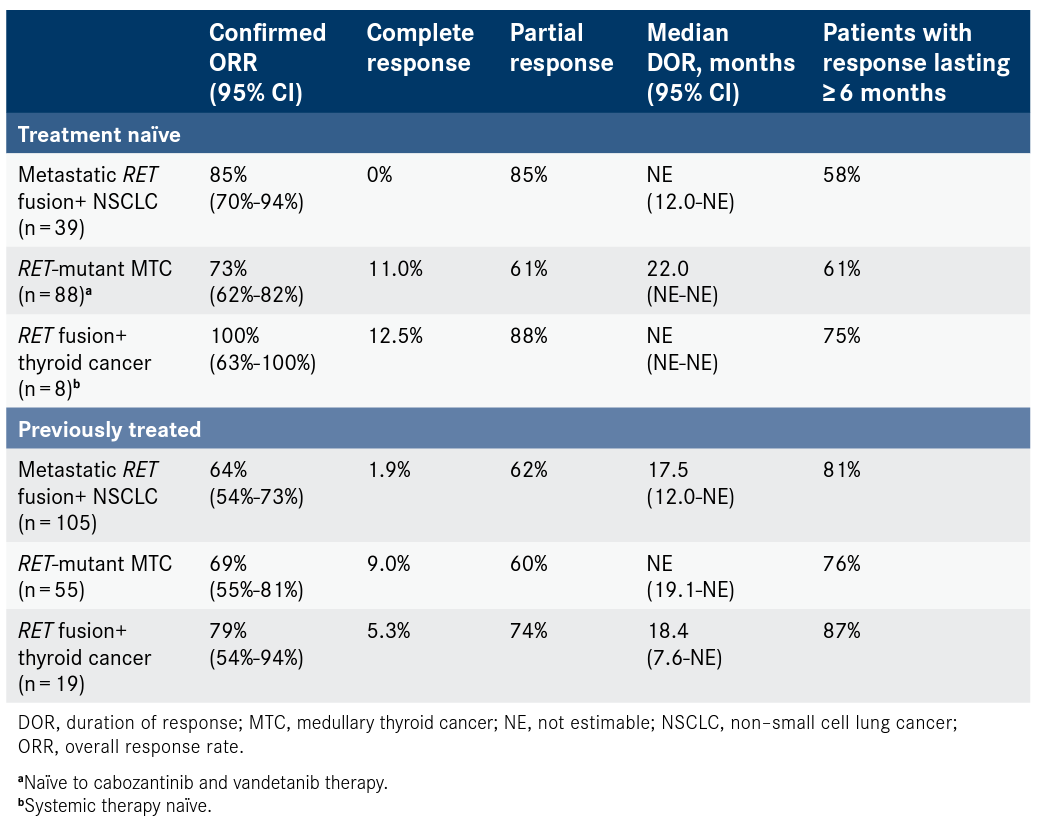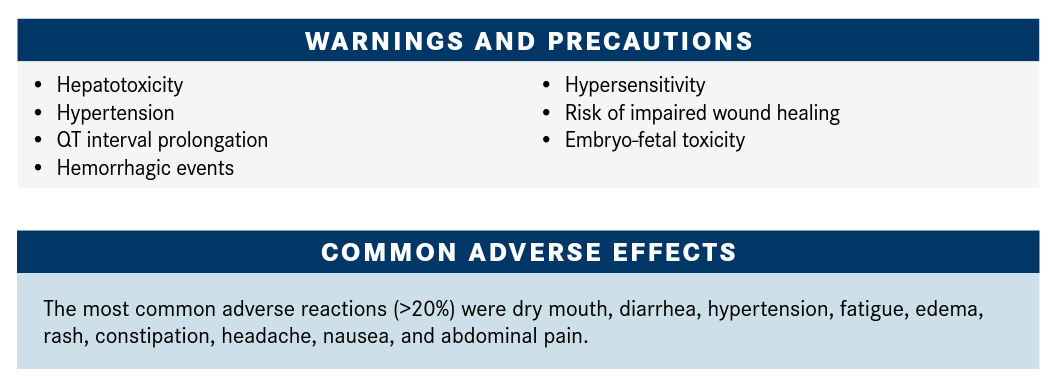RET Inhibitor Enters the Therapeutic Ring in Multiple Settings
Todd Bauer, MD, discusses how the highly specific nature of selpercatinib leads to greater tolerability than multityrosine kinase inhibitors and its frontline potential.
Todd Bauer, MD

Selpercatinib (Retevmo) joins the ranks of therapies approved for several tumor types, with indications for patients with non–small cell lung cancer (NSCLC), medullary thyroid cancer (MTC), and other thyroid malignancies with RET alterations.
On May 8, 2020, the FDA granted the drug an accelerated approval for adults with RET fusion–positive NSCLC; and adult and pediatric patients aged 12 years and older with either advanced or metastatic RET-mutant MTC who require systemic therapy or advanced or metastatic RET fusion–positive thyroid cancer who require systemic therapy and whose disease is refractory to radioactive iodine.1,2 The indications were based on overall response rate and response duration data from the phase 1/2 LIBRETTO-001 study (NCT03157128). The 2 confirmatory phase 3 trials—LIBRETTO-431 (NCT04194944) and LIBRETTO-531 (NCT04211337)— are currently enrolling patients.
Selpercatinib is the first therapy specifically indicated for patients with tumors that harbor RET gene alterations. On September 4, 2020, the FDA approved pralsetinib (Gavreto) for RET fusion-positive NSCLC and granted a priority review for indications in MTC and thyroid cancer.
In an interview with OncologyLive®, Todd Bauer, MD, an author on the LIBRETTO-001 study, associate director of Drug Development at Sarah Cannon Research Institute, and a medical oncologist at Tennessee Oncology, both in Nashville, discussed how the highly specific nature of selpercatinib leads to greater tolerability than multityrosine kinase inhibitors and its frontline potential.
Please describe the efficacy data that led to the approval.
We saw pretty impressive response rates across the 3 patient populations in the study, with an overall response rate of 64% in the pretreated non–small cell lung cancer population with RET fusions. In the treatment-naïve RET fusion–positive group, there was an 85% response rate, meaning selpercatinib would be a great substitution for chemotherapy for these patients.
In patients with [previously treated] RET-mutant medullary thyroid cancer, we saw an overall response rate of 69%. These patients had previously been treated with standard-of-care cabozantinib [Cabometyx] or vandetanib [Caprelsa]. Keeping in mind that cabozantinib and vandetanib are similar types of multityrosine kinase inhibitors that target RET to some extent, a 69% response rate in patients who had those agents before speaks to the specificity and efficacy with which selpercatinib targets RET fusions. In treatment-naïve patients with RET-mutant medullary thyroid cancer, we saw a 73% response rate.
Most impressively, in RET fusion–positive thyroid cancer, previously treated patients showed a 79% response rate, but in treatment-naïve patients, all 8 patients had at least a partial response.
Equally important is the duration of response. In the previously treated patients with lung cancer, it was 17.5 months and more than 81% had responses that lasted for more than 6 months, so the benefit was durable. In the treatment-naïve lung cancer population, 58% had a response for more than 6 months, and we have not yet reached the median duration of response in that population
In RET-mutant medullary thyroid cancer, 76% and 61% of pretreated patients and treatment-naïve patients [respectively] had a response that endured for more than 6 months. In the treatment-naïve group, the median duration of response was 22 months.
Similar numbers were seen in RET fusion–positive thyroid cancer: a median duration of response in a previously treated group of 18.4 months with 87% lasting more than 6 months.
Efficacy Results in the LIBRETTO-001 Trial

What is unique about selpercatinib’s safety profile?
Selpercatinib is a tyrosine kinase inhibitor that is highly specific for RET. By being this specific, selpercatinib is not only more effective against the mutated and fused versions of RET but is also better tolerated because it is not hitting off-target kinases, leading to the adverse events that we see with so many other multitaskers and kinase inhibitors.
The patients I have treated with this drug overwhelmingly tolerate it well. First-line chemotherapy or even chemoimmunotherapies do not come without toxicity, and selpercatinib in general is very well tolerated, with the most common adverse events being [liver function test] abnormalities and dry mouth. Selpercatinib has a 60% to 65% response rate with low incidence of adverse events, so I would always like to try to give that before I would administer cytotoxic chemotherapy or even immunotherapy.

How does selpercatinib’s approval advance the treatment paradigm?
Selpercatinib could be a game changer for patients who have RET mutations. In my opinion, it is hard to imagine offering chemotherapy up front with these data, so I think it could very well be a first-line therapy. And hopefully as patients and physicians learn more about selpercatinib, they will start to think about using it up front.
Selpercatinib could also be a rescue medicine for patients with thyroid cancer who had prior cabozantinib or vandetanib, and I think it will be interesting to see if we are able to translate its efficacy against RET fusions or mutations in other tumor types as well. Could this be an agent that could have greater efficacy against other diseases based purely on the presence of a RET alteration?
Selpercatinib represents the ongoing evolution of how we treat cancers, changing from treating a cancer by where it started to treating cancer by why it started. Developing therapies for individual patients rather than for a specific tissue type represents yet another step in the process of the evolution of personalized medicine that is allowing us to more effectively treat with well- tolerated medicines that can manage the disease for months to years, which offers great hope for patients, for families, and for caregivers.
References
- FDA approves selpercatinib for lung and thyroid cancers with RET gene mutations or fusions. FDA. Updated May 11, 2020. Accessed October 6, 2020. https://bit.ly/34JUV6t
- Retevmo. Prescribing information. Eli Lilly and Company; 2020. Accessed October 6, 2020. https://bit.ly/36Smq0g




